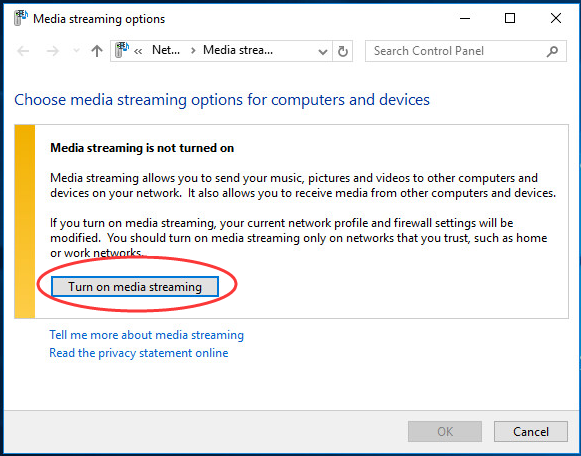

- Cast to upnp player windows 10 how to#
- Cast to upnp player windows 10 windows 10#
- Cast to upnp player windows 10 for android#
- Cast to upnp player windows 10 Pc#
- Cast to upnp player windows 10 free#
Cast to upnp player windows 10 free#
Streaming/Casting is limited to 30 minutes in the free version, but unlimited with MediaMonkey Gold. MediaMonkey can stream/cast the playing files to a DLNA or Chromecast capable player (client) on the same network. Streaming/Casting MediaMonkey Audio to a DLNA or Chromecast Renderer You should be able to browse the shared content from your MediaMonkey library from other DLNA devices. Once you're done, Click OK in the Media Sharing dialog, and then OK in the 'Options' dialog to accept the changes.Note that both the MediaMonkey Media Server as well as Casting from MediaMonkey require permissions in the Firewall
Cast to upnp player windows 10 for android#
MediaMonkey can Wifi Sync with MediaMonkey for Android on Android smartphones and MediaMonkey for Android can stream media files from MediaMonkey via UPnP.MediaMonkey also contains a DLNA renderer, allowing MediaMonkey to stream from DLNA Servers or be controlled by a DLNA control point App.In this case the MediaMonkey Player controls the DLNA/Chromecast client.
Cast to upnp player windows 10 Pc#
want to play the audio on your PC with a stereo system that's hooked up to a larger set of speakers.
Cast to upnp player windows 10 how to#
For more on that, please read our article: How to Play Local Media Files from Windows PC to Chromecast. And, we’ve covered some cool tricks using the Chrome browser on Windows 10. One of my favorite free utilities for it is Videostream. If you’re not a VLC user, there are other ways to beam your local files from Windows to your Chromecast. Once it’s playing, you can swipe down on the notification shade and control playback from there, too. Select media content, tap the “cast” button at the top, and choose the Chromecast you want to send it. But, since VLC can play virtually any media file format you throw at it, this ability can come in handy if you have a local file on your phone you need to play. This might seem redundant since it’s all Google, and you can cast anything from your Android device to Chromecast. You can also stream from VLC 3.0 on Android as well. It’s also worth noting that the first time you try it, you might get a message from your Windows firewall asking for permission to send the signal through. The results are random, and sometimes the audio or video wouldn’t play to the Chromecast.
Cast to upnp player windows 10 windows 10#
I’ve tested it using two different Windows 10 systems, two different Chromecast devices, and multiple audio and video formats – even physical discs. While the feature is available, I’ve had mixed results in my testing. Keep in mind that your mileage may vary with this. If you don’t see it listed in the menu, click Scan to find it. From the VLC toolbar, go to Playback > Renderer and choose your Chromecast device. Then load it up with the video or other supported media file (i.e., FLAC or APE) you want to play. Make sure you have the desktop version of VLC 3.0 or above installed on your PC - this also will work with Windows 7. Cast Local Videos from Windows 10 to Chromecast


 0 kommentar(er)
0 kommentar(er)
